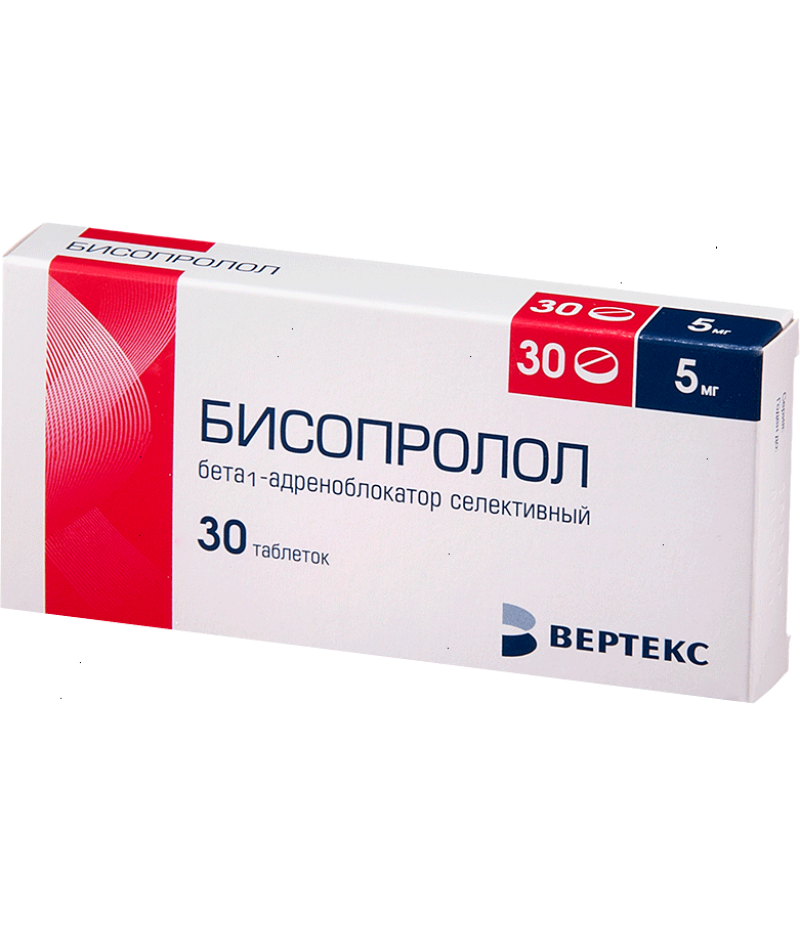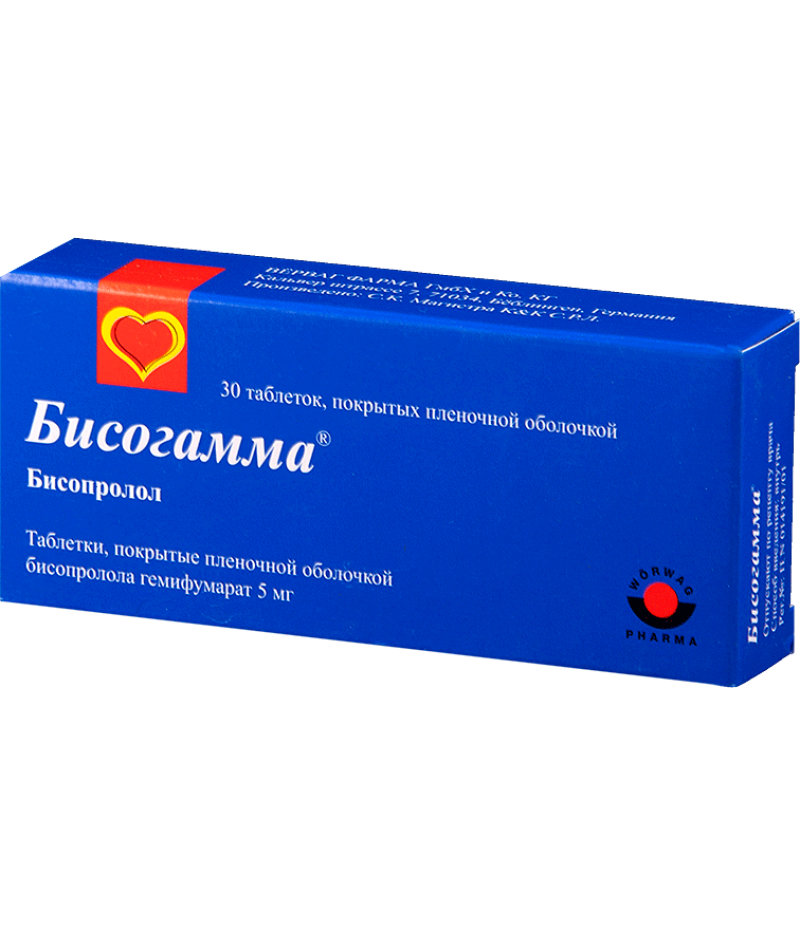Cordinorm tabs 5mg #30
- $10.59
- 3 or more $10.40
- Availability:In Stock
User manual for CordinormReed more and buy Cordinorm on this pageCompositionOne tablet of Cordinorm may include 5 mg or 10 mg of bisoprolol fumarate.Additional components: microcrystalline cellulose, titanium dioxide, mannitol, cr..
Tags: tabs
User manual for Cordinorm
Reed more and buy Cordinorm on this page
Composition
One tablet of Cordinorm may include 5 mg or 10 mg of bisoprolol fumarate.
Additional components: microcrystalline cellulose, titanium dioxide, mannitol, croscarmellose sodium, hypromellose, magnesium stearate, macrogol 6000.
Form of issue
White convex round tablets, with a notch on one surface and engraved "B 5" or "B 10" (depending on the dosage) on another surface.
Ten tablets in a blister; 3, 9 or 6 blisters in a cardboard box.
One hundred tablets in a container; one container in a cardboard box.
pharmachologic effect
Antiarrhythmic, hypotensive, antianginal.
Pharmacodynamics and pharmacokinetics
Pharmacodynamics
Elective beta1-adrenoblocker without endogenous sympathomimetic action and membrane-stabilizing properties. By inhibiting β1-adrenoreceptors of the heart, the active substance reduces the catecholamine-stimulated formation of cAMP from conventional ATP, lowers the intracellular transport of calcium ions. Has negative chronotropic, dromotropic, butmotropic and inotropic action, slows down AV conductivity, inhibits conduction and excitability, reduces the need of the heart in oxygen. Reduces palpitations in rest and during exercise. Reduces the effects of plasma renin.
With increasing doses, bisoprolol demonstrates a beta2-adrenergic blocking effect.
In the first 24 hours of the drug, peripheral vascular resistance increases slightly, and after 2-3 days it returns to its original level, and with prolonged use it decreases.
The hypotensive effect of the active component is due to a decrease in the minute amount of blood, a decrease in the function of the renin-angiotensin system, sympathetic activation of the peripheral vessels, the restoration of feedback with a decrease in blood pressure and influence on the brain. With arterial hypertension, the effect occurs after 2-6 days, and a stable effect - only after about 2 months.
Antiarrhythmic effect is caused by the elimination of factors that cause arrhythmia, as well as a decrease in the rapidity of the excitement of drivers of rhythm and the slowing of AV-conduction.
The antianginal effect is caused by a decrease in the need for myocardium in oxygen due to a decrease in heart rate and a decrease in contractility, an improvement in the perfusion of the heart tissues, and diastole lengthening. By increasing diastolic pressure and stretching the muscles of both ventricles, the need for oxygen may be increased.
When used in therapeutic dosages in contrast to indiscriminate beta-blockers, Cordinorm has less strong effect on target organs (skeletal muscles, uterus, smooth muscles of the arteries, pancreas, bronchi) and on the metabolism of carbohydrates, does not cause accumulation of sodium in the body. The force of atherogenic action is the same as that of Propranolol.
When used in large doses demonstrates a blocking effect on both types of β-adrenergic receptors.
Pharmacokinetics
After ingestion, up to 90% of bisoprolol is absorbed from the intestine. Food does not affect suction. The greatest content in the plasma occurs after 2-3 hours.
Interaction with blood proteins reaches approximately 35%. The permeability through the histohematological barriers and the degree of isolation during lactation are low.
Half of the dose taken is transformed in the liver with the production of inactive derivatives.
The elimination half-life is 11-12 hours. Up to 98% of the substance is excreted by the kidneys, and about 2% by the bile.
Indications for use Cordinorm
arterial hypertension;
the need to prevent attacks of angina in IHD.
Contraindications
Collapse.
Acute heart failure.
AV-blockade above 2 degrees without the use of a pacemaker.
Angina of Prinzmetal.
Shock.
Raynaud's disease.
Pulmonary edema.
Sinoatrial blockade.
Metabolic acidosis.
Weak sinus node.
Chronic decompensated heart failure.
Strong bradycardia.
Cardiomegaly without symptoms, characteristic of heart failure.
Arterial hypotension.
Joint reception of MAO blockers.
Bronchial asthma or obstructive chronic lung disease.
Late stages of disorders of peripheral circulation.
Pheochromocytoma (without the use of alpha-blockers).
Hypersensitivity to the components of the drug or other beta-blockers.
Age to 18 years.
It is recommended to use with caution the drug for myasthenia gravis, hepatic or renal insufficiency, diabetes mellitus, thyrotoxicosis, AV-blockade 1 degree, psoriasis, depression, elderly patients.
Side effects
You should know side effects before you buy Cordinorm.
Disorders from the senses: a decrease in the discharge of tear fluid, impaired vision, soreness and dry eyes, conjunctivitis.
Nervous system disorders: weakness, fatigue, dizziness, nightmares, sleep disorders, headache, depression, myasthenia gravis, confusion, memory loss, anxiety, asthenia, hallucinations, paresthesia, tremor.
Circulatory disorders: palpitations, decreased myocardial contractility, sinus bradycardia, changes in myocardial conductivity, arrhythmias, AV conduction, progression of chronic heart failure, orthostatic hypotension, lowering of pressure, manifestation of angiospasm, chest pain.
Disorders from the side of breathing: violation of breathing, nasal congestion, laryngospasm or bronchospasm.
Digestive disorders: dryness of the oral mucosa, abdominal pain, vomiting, constipation or diarrhea, taste change, nausea, changes in liver function, changes in liver enzymes, triglycerides, bilirubin levels.
Disorders from the hormonal sphere: hypoglycemia, hyperglycemia, hypothyroid status.
Dermatological reactions: redness of the skin, psoriasis-like reactions on the skin, increased sweating, exanthema, alopecia, exacerbation of psoriasis.
Allergic reactions: rash, hives, itching.
Disorders of hematopoiesis: agranulocytosis, leukopenia, thrombocytopenia.
Disorders from the genital area: weakening libido, lowering the potency.
Disorders from the musculoskeletal system: cramps in the muscles of the legs, muscle weakness, arthralgia, lumbulgia.
Action on the fetus: hypoglycemia, delayed fetal growth, bradycardia.
Other disorders: withdrawal syndrome.
Instructions for use Cordinorm (Method and dosage)
Instructions for use Cordinorm prescribes to take medicine in the morning, on an empty stomach, orally, without chewing.
The single dose is 2.5-5 mg. Usually the initial dose is 5 mg per day. If necessary, increase the dose to 10 mg per day. The maximum daily dose is 20 mg.
Treatment of patients with compensated disruption of the liver or kidneys, as a rule, does not require a dose change. In individuals with severe renal dysfunction (CC no more than 20 ml / min) or liver, the maximum daily dose is 10 mg.
In the elderly, there is no need to change the dose.
Overdose
Symptoms of overdose: severe bradycardia, decreased pressure, ventricular extrasystole, arrhythmia, AV blockade, chronic heart failure, cyanosis of the nails and skin of hands, bronchospasm, fainting, difficulty breathing, dizziness, convulsions.
Overdose therapy: gastric lavage and use of enterosorbents; symptomatic therapy.
Interaction
In persons receiving bisoprolol, immunotherapeutic and diagnostic allergens, the risk of systemic severe allergic reactions increases.
Iodine-containing intravenous radiopaque agents increase the risk of anaphylactic reactions.
With the simultaneous use of bisoprolol can change the effectiveness of insulin and hypoglycemic agents, as well as mask the symptoms of hypoglycemia.
Phenytoin, when administered intravenously, and the means for inhalation anesthesia increase the cardiopepressive effect and the likelihood of a decrease in pressure.
When combined, bisoprolol lowers the clearance of xanthines and lidocaine, and also increases their content in the blood.
The hypotensive effect of the drug when used together weaken non-steroidal anti-inflammatory drugs, glucocorticosteroids and estrogens.
Cardiac glycosides, reserpine, methyldopa, guanfacin, slow calcium channel inhibitors, amiodarone and other antiarrhythmic drugs, while being used with bisoprolol, increase the risk of developing AV blockade, bradycardia and even cardiac arrest.
When combined, nifedipine can significantly reduce blood pressure.
Diuretics, clonidine, sympatholytics, hydralazine and other antihypertensive drugs when used together can cause excessive pressure loss.
Cordinorm increases the duration of muscle relaxants nedepolyarizuyuschego type and coumarins.
Antidepressants of tricyclic and tetracyclic type, ethanol, sedative, antipsychotic and hypnotic drugs increase the inhibitory effect of bisoprolol on the nervous function.
It is not recommended simultaneous use with MAO blockers (as well as the use of Cordinorm in the two-week period after their administration) due to the increased antihypertensive effect.
Ergotamine with simultaneous application increases the risk of peripheral circulatory disorders.
Ergot alkaloids of an unhydrated type, when combined, increase the risk of peripheral circulatory disorders.
Rifampicin when used together shortens the elimination half-life of the active ingredient.
Sulfasalazine increases the content of bisoprolol in the blood.
Storage conditions
Keep away from children. Store at room temperature.
Shelf life - 2 years.
special instructions
It is not recommended to stop the treatment or change the recommended dose without consulting a doctor.
Control of persons taking Cordinorm includes monitoring heart rate and blood pressure, ECG, glucose level in patients with diabetes (every 4 months). In elderly patients it is recommended to monitor the work of the kidneys (every 4 months).
Prior to treatment, patients with a history of pulmonary history should be examined for external respiration.
Approximately in 20% of patients with angina pectoris, beta-blockers are ineffective.
When smoking, the effects of beta-blockers are weakened.
When using Cordinorm in people with pheochromocytoma, there is a risk of the appearance of arterial hypertension of the paradoxical type.
It is possible to intensify hypersensitivity reactions and inefficiency of usual dosages of epinephrine in a burdened allergological anamnesis. If surgical treatment is necessary, discontinuation of the drug is carried out two days before the start of anesthesia.
Drugs that lower the reserves of catecholamines can stimulate the effect of beta-adrenoblockers, therefore, patients taking these drug combinations should be under regular medical supervision.
Persons with bronchospastic diseases are allowed to prescribe selective adrenoblockers if other antihypertensive agents are ineffective, but it is necessary to strictly control the dosage. Overdose can cause bronchospasm.
It is recommended to complete therapy with depression, caused by the use of beta-blockers.
It is forbidden to discontinue therapy dramatically because of the risk of myocardial infarction and life-threatening arrhythmias.
Cancellation is carried out gradually, reducing the dose for 2 weeks or more.
In the period of therapy, patients need to be careful when driving vehicles.
Children
Do not take the drug to people under 18 years of age.
In pregnancy and lactation
It is possible to use the drug in these periods if there are indications and taking into account possible risks.
Reviews of Cordinorm
Reviews of the Cordinorm characterize the medicine as inexpensive, effective, with a long shelf life and clear instructions. Side effects occur infrequently.




